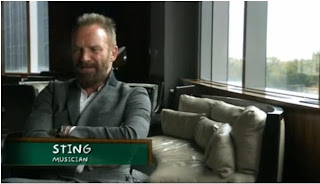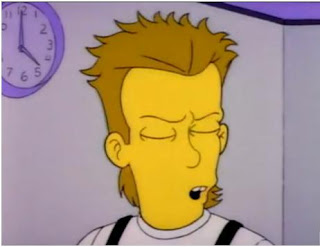http://www.youtube.com/watch?v=orLGl7c5oHc (The Simpsons, Part 1)
http://www.youtube.com/watch?v=42Zj8R0kumw (In The Teeth of Jaws, Part 1)
After analysing these two documentaries carefully, I realised that the interviewee always speaks as though they are answering questions but no questions are heard, therefore, they must answer in full sentences. As well as this, the interviewee never looks straight into the camera but as though they are talking to the interviewer. This gives it a more relaxed focus and doesn't make it look personal but as though they are talking to a large group of people. They are also shot in either a mid-shot or a close-up but very rarely in a full or long shot. This again is to make it look more personal.
Another code and convention is the title that appears whenever anybody new speaks. This title tells us their name and why they are important to the documentary and how they are linked to the subject. For example, in The Simpsons documentary, Sting is talking about the Simpsons so a title pops up in the bottom left hand corner saying, "Sting, Musician". A cutaway to a Simpsons episode which Sting is in then appears to show how he is related to The Simpsons.


Cutaway shots are used to add interest to a documentary because if it was just talking all the way through they would be very boring. Cutaway shots also backup the points that the interviewees are saying. For example, in documentaries about films, such as a documentary that I have watched about the Charlie Chaplin film Modern Times, the cutaway shots were often of the section of the film that the presenter was talking about so that even if the audience hadn't watched the film then they would still understand what the point was.